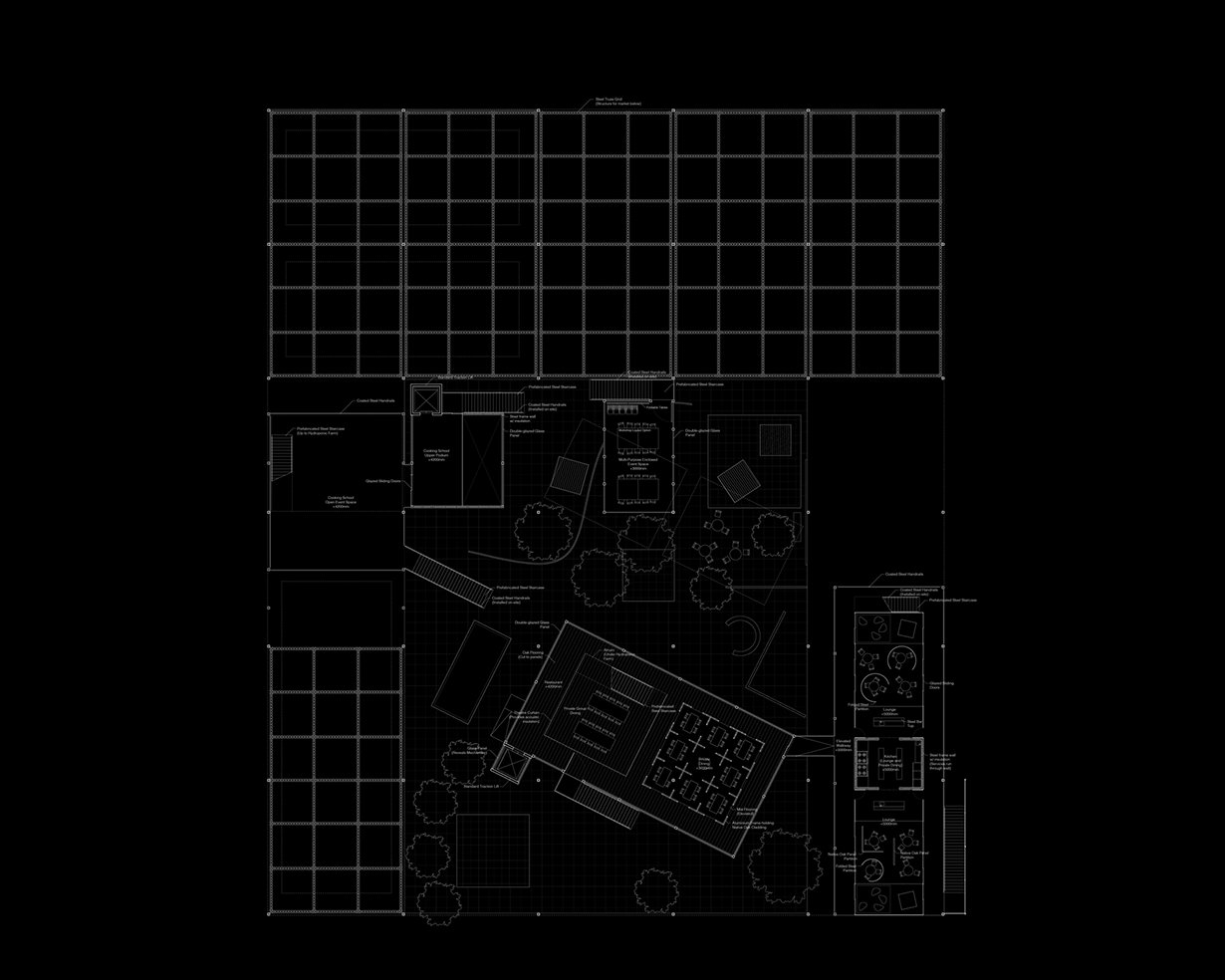Temporary Shelter for the Architectural Association and Amnesty International Pavilion
Temporary Shelter reimagines the AA x Amnesty Pavilion competition brief by using mycelium as an insulating material for emergency shelters rather than as a speculative form-making tool.
The design investigates how mycelium can be grown by inhabitants to create insulation within timber frame systems made from imported wood sourced from Russia and Romania. The project emphasises the process of material cultivation and its integration into construction, rather than focusing on emergent architectural form.
Material Ecologies of Care
Humanitarian shelter design is often dominated by speculative visions that overlook practical construction and resource realities. Temporary Shelter redirects attention to material ecologies that can be produced and maintained by occupants themselves, strengthening resilience and autonomy.
Process over Form
The prototype imagines timber frame structures using standard factory dimensions of sheets and columns. Mycelium insulation is grown directly by inhabitants to fill wall systems. Assembly is simple, requiring only sawing with hand tools. Modular shelters are designed to house up to five individuals, repeatable on any level ground. A secondary subdivision system allows interiors to adapt for privacy and function.
Toward Living Infrastructures
Temporary Shelter positions architecture as process rather than spectacle. By integrating living materials into construction systems, the project outlines a pathway toward adaptive, low-energy shelters that can be produced and sustained in humanitarian contexts.
Project Media
View in Projects






